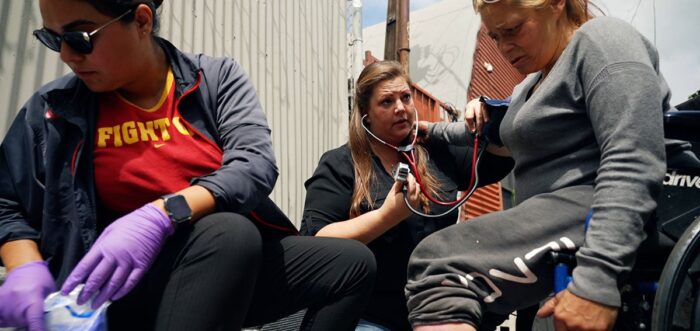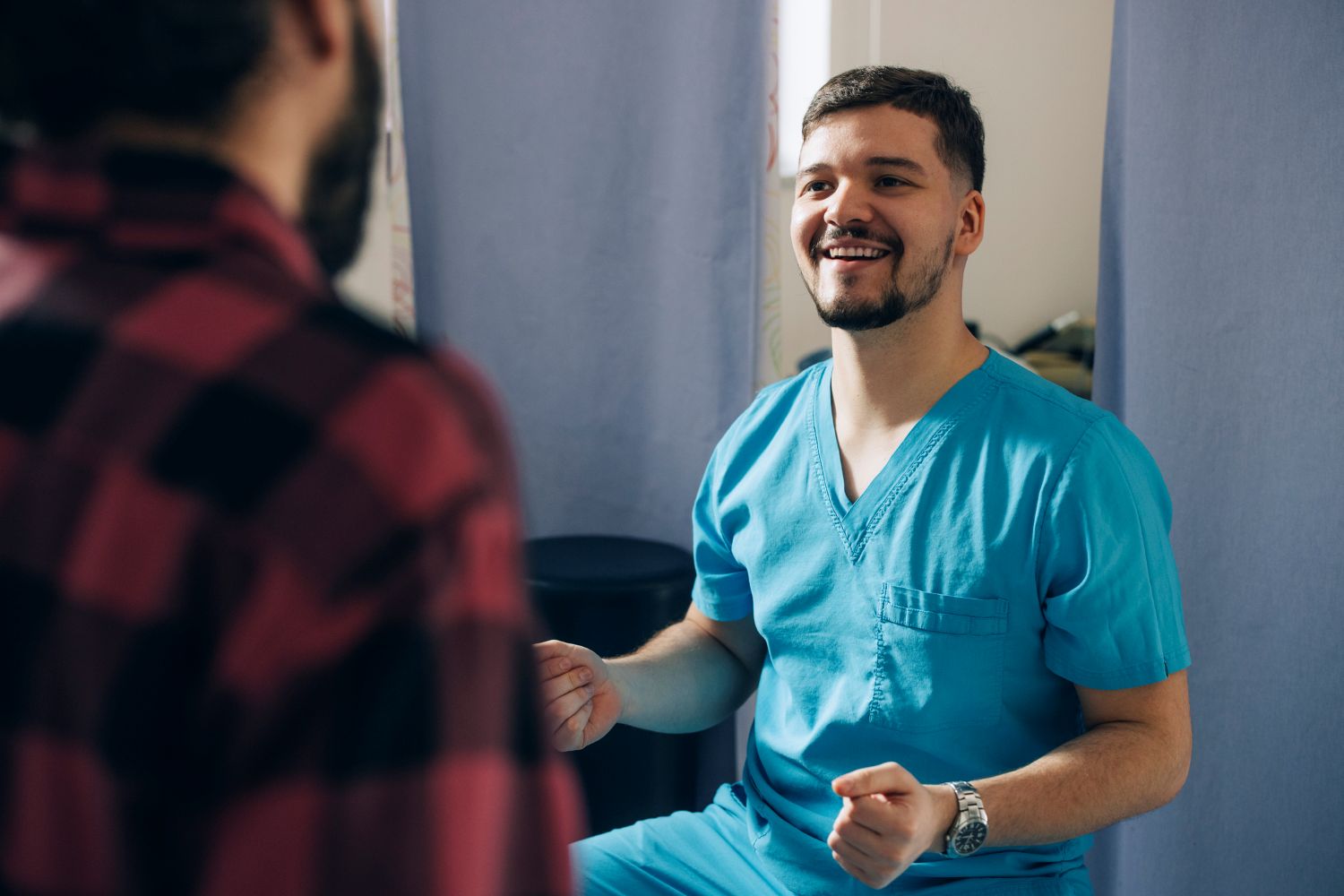
Homelessness and health are inextricably linked. People experiencing homelessness often have serious physical and behavioral health needs but little access to traditional health care facilities and providers.
While the health care system was not designed to help people who don’t have stable housing or transportation, it has a role to play in ensuring treatment for them. Street medicine programs emerged to do just that.
Street medicine is the provision of health care directly to people who are unsheltered, in their own environment. First established in the early 1990s, street medicine has evolved from a fringe movement of health care providers to an organized area of medicine, with programs that span the globe.
Broadly defined, street medicine includes walking teams, medical vans, and outdoor clinics. Using tailored outreach and engagement strategies, street medicine programs can provide direct care outdoors to people who have not sought or do not want to seek care in traditional settings or help link people to brick-and-mortar primary care sites and housing.
Given California’s large numbers of people experiencing unsheltered homelessness, additional street medicine programs that are sustainably funded are needed across the state.
Our Goal
CHCF supports projects that expand proven models of street medicine programs that are responsive and equitably focused on people’s behavioral, physical, and housing needs. We seek to commission evaluations and quality improvement plans. Finally, we support research into policy approaches to improve the coordination and delivery of street-based care for people experiencing unsheltered homelessness. Following is a summary of our current work in this area.
Project Highlights
Understand Existing Street Medicine Models
Starting in 2022, a team of researchers at the Keck School of Medicine of the University of Southern California’s Division of Street Medicine conducted the first review of the current state of street medicine in California. The team identified 25 programs in California that met the definition of street medicine, as defined by the Street Medicine Institute. The researchers conducted a 41-question survey and interviews with select program leaders and other health care leaders. They also conducted site visits with diverse street medicine programs around California.
Their paper, The California Street Medicine Landscape Survey and Report, includes these key findings:
- The majority of the 25 programs identified are in Los Angeles County or the San Francisco Bay Area.
- Nearly half are part of a Federally Qualified Health Center. Other sponsors are hospitals, independent nonprofit organizations, government entities, academic institutions, and health plans.
- Street medicine is a critical access point for people of color, with 25% of patients identifying as Black and 23% identifying as Latino/x.
- Prescribers (physicians, physician assistants, and nurse practitioners) form the staffing backbone of nearly all street medicine teams in California. Teams also routinely include registered nurses, community health workers, and peers.
- More than two-thirds of street medicine programs diagnose and treat mental health conditions and substance use disorders, with 60% providing medication-assisted therapy. The majority provide primary care services.
- Nearly all street medicine patients are insured, with at least 57% having Medicaid and 14% having Medicaid and Medicare.
CHCF published State of Street Medicine in California (PDF), a summary of the landscape paper.
Street Medicine Video Site Visits
While the USC Street Medicine team was conducting the landscape survey described above, they were accompanied by videographer-storyteller Mark Horvath of Invisible People, a nonprofit group that educates the public about homelessness. Horvath created video site visits of street medicine programs in Bakersfield, Los Angeles, Oakland, and Redding.
While of broad interest, these videos may be of particular interest to clinicians or organizations interested in launching or expanding their street medicine programs. Viewers will learn about different models, engagement strategies, and street-based health care interventions.
Additional Resources
In November 2022, California’s Department of Health Care Services issued detailed guidance (PDF) on how managed care health insurance plans could work with street medicine providers to address the clinical and nonclinical needs of Californians experiencing homelessness. The guidance clarifies how plans can contract with different types of street medicine teams and allow those teams to bill for providing care outside of a facility.
A CHCF issue brief, A Game Changer for Street Medicine: Key Takeaways from New Medi-Cal Guidelines, outlines the key takeaways from the department’s guidelines and describes several areas to watch as implementation unfolds.
An article published on The CHCF Blog, “Street Medicine in California: ‘Go to the People,’” features an interview with Brett Feldman.
Learn More
For more information, please contact CHCF’s Michelle Schneidermann.





